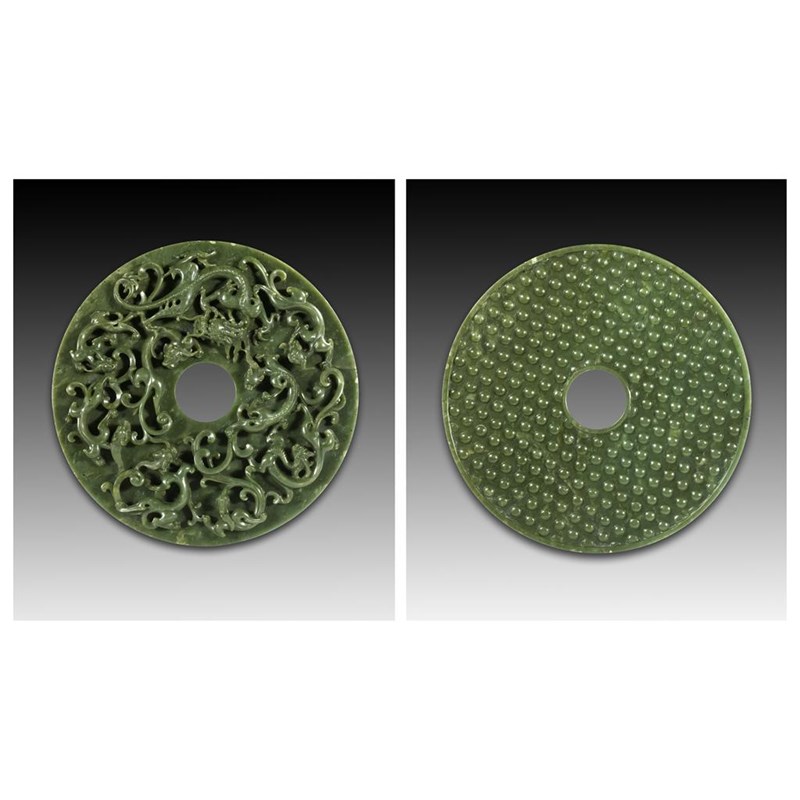Asian Art Day One - 20 May 2009
387
The Bruce Imperial Bi Disc A Magnificent and Rare Chinese Imperial Spinach-Green Jade Bi Disc
The Bruce Imperial Bi Disc
A Magnificent and Rare Chinese Imperial Spinach-Green Jade Bi Disc,
carved with Nine Dragons, Qing Dynasty, Qianlong Period 1736-95, 20.1cm dia.
Deeply carved in high relief with nine sinuous writhing dragons and chilongs encircling the central aperture, the reverse carved with an overall array of small raised circular bosses, the stone of a rich even spinach-green colour.
Exhibited
The International Exhibition of Chinese Art, The Royal Academy of Arts, London 1935/6 catalogue number 2784.
Provenance
The R.C. Bruce Collection.
Purchased from Spink & Son in 1952.
Catalogue note
Bi discs or stone rings were being made by the people of eastern China as early as the fifth millennium BC. Jade discs have been found carefully laid on the bodies of the dead in tombs of the Hongshan culture (about 3800-2700 BC), a practice which was continued by later Neolithic cultures, After the Shang period they are usually more ornate, carved with dragons, snakes or fish, and used in ritual ceremonies. While the meanings that the Neolithic jades carried in their own time is not known, it is theorized that they were to assist the spirit in the afterlife.
A fine white jade bi disc from the Palace Museum Beijing, Gu103121 with related decoration to the reverse of the present example, dated to the Qianlong Period, is illustrated: China, The Three Emperors 1662-1795, No.200.
This rare bi disc was reputedly made to celebrate the Qianlong Emperor's 60th birthday.

